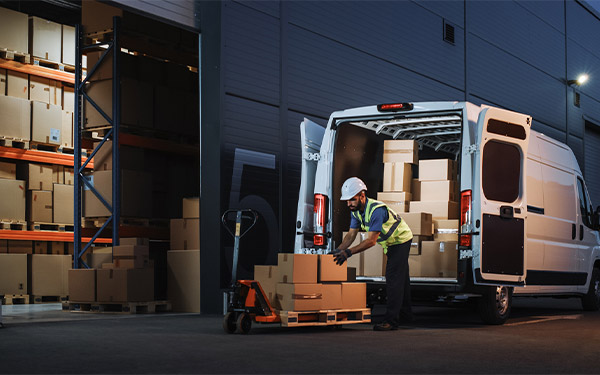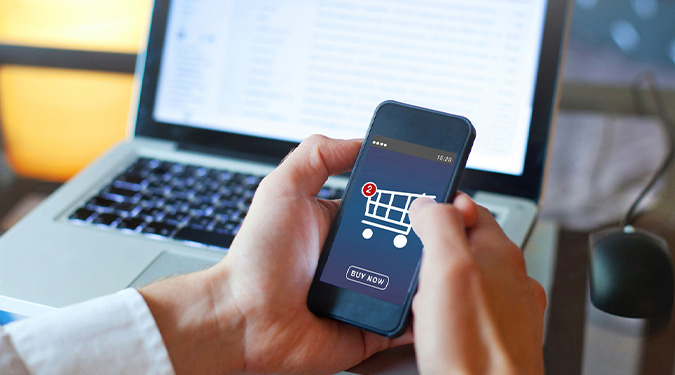Table of Contents
Most of us know the phrase “last mile logistics” and the B2B eCommerce challenges associated with getting goods onto consumers’ doorsteps. That last mile is typically the most costly and complicated step in delivering eCommerce purchases to consumers.
Amazon reportedly spends north of $25 billion a year operating its own delivery infrastructure, much of it designed to speed delivery of orders in 2 days, next day or same day. A lot of that cost and reengineering ingenuity has focused on investing in the logistics processes that get goods from a warehouse to your doorstep.
If we flip the script and think about purchasing in a B2B context the same is true. The last mile of purchasing can be the one that presents the most friction, cost and overall B2B eCommerce challenges for both buyers and suppliers.
Think of all that goes into supplier management. Choosing the companies to supply specific goods and services. Negotiating prices and guaranteed availability. Arranging for shipping and logistics for delivery when and where you want products delivered. Agreeing upon terms for when you pay and the governance around disputes, short payments, etc.
Defining the B2B eCommerce Challenges of Last Mile Purchasing
All that sounds like a lot but it pales in comparison to the operational logistics of the last mile of purchasing, including:
- Buying goods with accurate negotiated prices and inventory levels
- Getting suppliers accurate POs
- Making sure goods are delivered on time
- Receiving accurate invoices and matching them with POs
- Paying suppliers in a timely contractually-obligated manner
On the surface, the immense focus on driving adoption of B2B eCommerce by suppliers, coupled with more and more buyers implementing eProcurement solutions to better control spend, would seem to make last mile purchasing more complicated. In fact, the right connected commerce solutions can drastically reduce the friction in last mile purchasing. Consider the extent of connected B2B commerce solutions now available that can change the game for both buyers and suppliers.
Integration Reduces Friction and Costs in Last Mile Purchasing
PunchOut capabilities – the ability to securely sign on to eCommerce site from within eProcurement systems – have gone from obscure to well penetrated across the B2B commerce landscape. However, there are now more than 75 credible commerce systems to integrate to and more than 175 eProcurement solutions. Whether you are a buyer or supplier, implementing and maintaining integrations between these solutions on your own makes less and less sense. In a forthcoming ROI study we will be releasing, suppliers saw a 4-5X return on investment using a third party to build and maintain integrations to systems their buyers rely on more and more, versus trying to do it themselves.
Purchase Order (PO) Automation is the next step in removing friction from B2B last mile purchasing. Once an order is approved by a buyer using an eProcurement system, a PO is typically automatically generated. However, sending that PO via email is inherently inefficient. Transmitting PO data electronically to a supplier, in the format that the supplier’s systems need it, is key to last mile purchasing efficiency. Similarly, acknowledging back the receipt of the purchase order, in a format the buyer’s systems need to receive it, is becoming more and more a requirement for automated frictionless trade.
The final step is Invoice Automation. Once goods have shipped, invoices are always generated. But similar to POs, why send an invoice via email? With proper integration technology in place, an invoice can be automatically sent to the buyer in a format that the buyer’s system will be able to ingest and route internally for payment approval. We continually hear from buyers how invoicing is a major pain point, causing a lot of human intervention for invoice-to-PO matching. The right integration technology helps alleviate these pain points, reducing costs for suppliers and buyers and assuring suppliers more often are paid on time.
Connected Commerce Benefits Both Buyers and Suppliers in Last Mile Purchasing
As more and more eCommerce systems and eProcurement solutions take center stage in B2B commerce, the question is: How best to drive growth without increasing complexity and cost in the last mile of purchasing? More and more sophisticated integration solutions are helping drive connected commerce that benefit both buyers and their suppliers. Connected commerce removes friction from B2B last mile purchasing, enabling growth and driving efficiencies for all participants.




